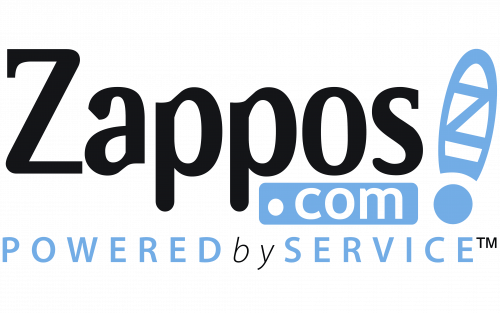Leadership Lessons from Zappos: Cultivating a Culture of People, Innovation, and Customer Service
 The Zappos Way: How Exceptional Leadership Created a Culture of Success
The Zappos Way: How Exceptional Leadership Created a Culture of Success
Zappos is a company that has become synonymous with exceptional customer service and employee satisfaction. Founded in 1999 by Nick Swinmurn, the company began as an online shoe retailer and has since expanded to offer a wide range of clothing and accessories. However, what sets Zappos apart from its competitors is its unique company culture and leadership style.
As a leadership expert with over 40 years of experience, I believe that studying the leadership lessons of successful companies can provide valuable insights into effective management techniques. The story of Zappos is particularly compelling because it demonstrates the power of building a strong culture, empowering employees, and prioritizing customer service.
In this article, we will explore the leadership lessons and stories of Zappos, beginning with an overview of the company’s culture. We will then delve into the leadership styles of Tony Hsieh and other Zappos executives, examining the strategies they employed to drive the company’s success. Finally, we will discuss the impact of Zappos’ leadership on the business, including its financial success and positive impact on the community.
By the end of this article, readers will have gained a deeper understanding of the leadership lessons and strategies employed by Zappos, and how they can be applied to other businesses seeking to improve their organizational culture, employee engagement, and customer satisfaction.
Culture of Zappos
Core values of Zappos
At the heart of Zappos’ culture are its core values. These values serve as a guiding force for the company and shape the way that employees approach their work. The core values of Zappos include:
-
Deliver WOW through service: Zappos strives to provide exceptional customer service and exceed expectations with every interaction.
-
Embrace and drive change: The company is constantly evolving and adapting to meet the needs of its customers and employees.
-
Create fun and a little weirdness: Zappos believes in creating a work environment that is both enjoyable and unconventional.
-
Be adventurous, creative, and open-minded: Employees are encouraged to take risks, think outside the box, and approach challenges with an open mind.
-
Pursue growth and learning: Zappos believes in continuous learning and development, both for individuals and the company as a whole.
-
Build open and honest relationships with communication: Transparency and communication are key to building strong relationships, both within the company and with customers.
-
Build a positive team and family spirit: Zappos fosters a sense of camaraderie and support among its employees, creating a “Zappos family” that extends beyond the workplace.
Employee empowerment and engagement
One of the most distinctive features of Zappos’ culture is its emphasis on employee empowerment and engagement. The company invests heavily in its employees, offering extensive training and development programs, as well as a range of perks and benefits. Employees are also given a high degree of autonomy and encouraged to take ownership of their work.
This approach has paid off in numerous ways. For example, Zappos’ customer service team is known for its exceptional responsiveness and problem-solving skills, a result of the extensive training and support that employees receive. Additionally, employee turnover at Zappos is lower than average, which is a testament to the company’s commitment to creating a positive work environment.
Customer-centric focus
Finally, Zappos’ culture is deeply rooted in a customer-centric focus. The company is known for its “no questions asked” return policy, which allows customers to return items for any reason within a generous window of time. This policy reflects Zappos’ commitment to putting the customer first and creating a seamless, hassle-free shopping experience.
The customer-centric focus extends beyond the return policy, however. Zappos employees are trained to listen carefully to customers’ needs and concerns, and to go above and beyond to address them. This approach has earned the company a loyal customer base and a reputation for outstanding service.
The culture of Zappos is a key factor in its success as a business. The company’s core values, focus on employee empowerment and engagement, and customer-centric approach have created a unique and compelling brand that has set it apart from its competitors. By prioritizing these elements in their own businesses, leaders can create a more positive and productive workplace, build customer loyalty, and drive long-term success.
Leadership lessons from Tony Hsieh
Tony Hsieh was the CEO of Zappos from 2000 until his untimely death in 2020. Hsieh was known for his unconventional approach to leadership, which prioritized culture and people above all else. In this section, we will explore some of the key leadership lessons that can be learned from Hsieh’s approach.
Importance of leading by example
One of the most notable aspects of Hsieh’s leadership was his commitment to leading by example. He believed that in order to create a culture of excellence, leaders must set the standard themselves. This meant that Hsieh was often seen working alongside his employees, whether it was answering customer service calls or packing boxes in the warehouse. By modeling the behavior he expected from his team, Hsieh demonstrated the importance of hard work, dedication, and a willingness to get your hands dirty.
Embracing failure and taking risks
Another key lesson from Hsieh’s leadership was his willingness to embrace failure and take risks. Hsieh recognized that in order to innovate and stay ahead of the competition, companies must be willing to try new things and take calculated risks. He encouraged his employees to think outside the box and take risks, even if it meant making mistakes along the way. This approach helped to create a culture of experimentation and innovation at Zappos, which in turn contributed to the company’s success.
Putting people first
Perhaps the most important lesson that can be learned from Hsieh’s leadership is the importance of putting people first. Hsieh believed that happy employees lead to happy customers, and he made it his mission to create a workplace that was supportive, inclusive, and fun. This approach extended beyond just providing perks and benefits – Hsieh wanted his employees to feel like they were part of a family, and he worked hard to cultivate a culture of trust, respect, and camaraderie. By prioritizing the well-being of his employees, Hsieh created a company that was able to attract and retain top talent, and that was able to deliver exceptional service to its customers.
Leadership lessons from other Zappos executives
While Tony Hsieh was undoubtedly a driving force behind Zappos’ success, he was not the only leader who contributed to the company’s culture and growth. In this section, we will explore some of the leadership lessons that can be learned from other Zappos executives.
Delivering happiness
One of the key values at Zappos is “Deliver WOW through service”, which reflects the company’s commitment to providing exceptional customer service. This value was championed by former Zappos COO and CFO, Alfred Lin. Lin recognized that in order to create a memorable customer experience, companies must go above and beyond what is expected. By focusing on delivering happiness to customers, Zappos was able to build a loyal customer base and differentiate itself from its competitors.
Building trust and transparency
Another important lesson that can be learned from Zappos executives is the importance of building trust and transparency. Former Zappos CEO and current COO of Downtown Project, Jenn Lim, has spoken extensively about the need for leaders to be open and honest with their employees. This means sharing information about the company’s goals and challenges, as well as being transparent about decision-making processes. By creating a culture of trust and transparency, leaders can build stronger relationships with their employees and create a more productive and positive work environment.
Encouraging innovation and creativity
Finally, former Zappos VP of Marketing, Aaron Magness, has emphasized the importance of encouraging innovation and creativity in the workplace. Magness recognized that in order to stay ahead of the curve, companies must be willing to take risks and embrace new ideas. He encouraged his team to think creatively and experiment with new marketing strategies, which helped to keep Zappos ahead of the competition. By fostering a culture of innovation and creativity, leaders can inspire their employees to think outside the box and come up with new ideas and approaches.
The leadership lessons from Zappos extend beyond just Tony Hsieh’s unconventional approach to leadership. Other Zappos executives have also contributed valuable insights and strategies for creating a workplace culture that prioritizes people, innovation, and customer service. By embracing these lessons and applying them to their own organizations, business leaders can create a workplace culture that is supportive, engaging, and successful.
Leadership lessons from Tony Hsieh
Tony Hsieh was the CEO of Zappos from 2000 until his untimely death in 2020. Hsieh was known for his unconventional approach to leadership, which prioritized culture and people above all else. In this section, we will explore some of the key leadership lessons that can be learned from Hsieh’s approach.
Importance of leading by example
One of the most notable aspects of Hsieh’s leadership was his commitment to leading by example. He believed that in order to create a culture of excellence, leaders must set the standard themselves. This meant that Hsieh was often seen working alongside his employees, whether it was answering customer service calls or packing boxes in the warehouse. By modeling the behavior he expected from his team, Hsieh demonstrated the importance of hard work, dedication, and a willingness to get your hands dirty.
Hsieh was known to be a hands-on CEO who would work alongside his employees and engage with them at all levels of the organization. He believed that leadership was not just about telling people what to do, but about setting an example and leading from the front. By leading by example, Hsieh was able to build a culture of trust and respect within the company, which in turn led to high levels of employee engagement and satisfaction.
Embracing failure and taking risks
Another key lesson from Hsieh’s leadership was his willingness to embrace failure and take risks. Hsieh recognized that in order to innovate and stay ahead of the competition, companies must be willing to try new things and take calculated risks. He encouraged his employees to think outside the box and take risks, even if it meant making mistakes along the way. This approach helped to create a culture of experimentation and innovation at Zappos, which in turn contributed to the company’s success.
Hsieh believed that the fear of failure was one of the biggest barriers to innovation and growth. By encouraging his employees to take risks and embrace failure, he was able to create an environment in which ideas could be freely shared and tested. This approach helped to foster a culture of innovation and creativity at Zappos, which was essential to the company’s success in a fast-changing market.
Putting people first
Perhaps the most important lesson that can be learned from Hsieh’s leadership is the importance of putting people first. Hsieh believed that happy employees lead to happy customers, and he made it his mission to create a workplace that was supportive, inclusive, and fun. This approach extended beyond just providing perks and benefits – Hsieh wanted his employees to feel like they were part of a family, and he worked hard to cultivate a culture of trust, respect, and camaraderie. By prioritizing the well-being of his employees, Hsieh created a company that was able to attract and retain top talent, and that was able to deliver exceptional service to its customers.
Hsieh believed that the key to creating a successful company was to focus on the happiness and well-being of its employees. He believed that when employees feel valued and respected, they are more likely to be engaged and productive at work. This approach helped to create a positive and supportive work environment at Zappos, which in turn led to high levels of employee satisfaction and engagement.
The leadership lessons from Tony Hsieh are invaluable for any business leader who wants to create a positive and productive work environment. By leading by example, embracing failure and taking risks, and putting people first, Hsieh was able to create a culture at Zappos that prioritized excellence, innovation, and customer service. These lessons can be applied to any organization, regardless of size or industry, and can help to drive success and growth in a rapidly changing market. Hsieh’s legacy at Zappos is a testament to the power of unconventional leadership, and his approach to prioritizing people and culture has left an indelible mark on the business world. By following in his footsteps and focusing on the well-being and happiness of employees, business leaders can create a workplace culture that inspires creativity, innovation, and success.
Leadership lessons from other Zappos executives
While Tony Hsieh was undoubtedly a driving force behind Zappos’ success, he was not the only leader who contributed to the company’s culture and growth. In this section, we will explore some of the leadership lessons that can be learned from other Zappos executives.
Delivering happiness
One of the key values at Zappos is “Deliver WOW through service”, which reflects the company’s commitment to providing exceptional customer service. This value was championed by former Zappos COO and CFO, Alfred Lin. Lin recognized that in order to create a memorable customer experience, companies must go above and beyond what is expected. By focusing on delivering happiness to customers, Zappos was able to build a loyal customer base and differentiate itself from its competitors.
Lin’s leadership style was characterized by his focus on building strong relationships with customers and employees. He believed that in order to create a successful business, it was important to focus on the human element, and to prioritize the needs and wants of both customers and employees. This approach helped to create a culture of customer service excellence at Zappos, which remains a key part of the company’s brand to this day.
Building trust and transparency
Another important lesson that can be learned from Zappos executives is the importance of building trust and transparency. Former Zappos CEO and current COO of Downtown Project, Jenn Lim, has spoken extensively about the need for leaders to be open and honest with their employees. This means sharing information about the company’s goals and challenges, as well as being transparent about decision-making processes. By creating a culture of trust and transparency, leaders can build stronger relationships with their employees and create a more productive and positive work environment.
Lim’s approach to leadership was characterized by her focus on creating a supportive and inclusive workplace culture. She believed that in order to create a successful business, it was important to prioritize the well-being of employees, and to create an environment in which they could thrive. By building trust and transparency within the organization, Lim was able to create a culture that valued open communication and feedback, which in turn led to higher levels of employee engagement and satisfaction.
Encouraging innovation and creativity
Finally, former Zappos VP of Marketing, Aaron Magness, has emphasized the importance of encouraging innovation and creativity in the workplace. Magness recognized that in order to stay ahead of the curve, companies must be willing to invest in new ideas and approaches, and to embrace new technologies and trends. He encouraged his team to think creatively and to experiment with new marketing strategies, even if it meant taking risks or making mistakes.
Magness’ leadership style was characterized by his focus on innovation and creativity. He believed that in order to create a successful business, it was important to be willing to take risks and to try new things. This approach helped to foster a culture of experimentation and innovation at Zappos, which was essential to the company’s success in a fast-changing market.
The leadership lessons from Zappos executives demonstrate the importance of prioritizing the needs of both employees and customers, building trust and transparency within the organization, and encouraging innovation and creativity. These lessons can be applied to any business, regardless of size or industry, and can help to drive growth and success in a highly competitive marketplace. By learning from the example set by Zappos, leaders can create a workplace culture that is supportive, inclusive, and innovative, which can lead to higher levels of employee engagement, customer satisfaction, and long-term business success.
Applying Zappos’ leadership lessons to your own organization
The leadership lessons from Zappos can provide valuable insights for any business leader looking to improve their own organization. In this section, we will explore how the lessons from Zappos can be applied to different aspects of business leadership, including culture, employee engagement, customer service, and innovation.
Cultivating a strong company culture
One of the key factors behind Zappos’ success was its strong company culture. By prioritizing values like transparency, trust, and inclusivity, Zappos was able to create a workplace that was supportive, engaging, and fun. To apply this lesson to your own organization, consider the following strategies:
-
Define your core values: Like Zappos, your organization should have a set of core values that guide decision-making and shape the company culture.
-
Lead by example: As a leader, it’s important to model the behavior you want to see in your employees. This means being transparent, communicative, and supportive.
-
Prioritize employee well-being: Create a workplace culture that values work-life balance, career development, and employee engagement.
Fostering employee engagement
Zappos was known for its high levels of employee engagement, which was a key factor in the company’s success. To apply this lesson to your own organization, consider the following strategies:
-
Provide training and development opportunities: Invest in your employees by providing training and development programs that help them grow professionally.
-
Foster a sense of community: Create opportunities for employees to connect with one another and build relationships, both inside and outside of work.
-
Encourage employee feedback: Solicit feedback from your employees on a regular basis, and use it to improve the workplace culture and address issues that may be affecting engagement.
Delivering exceptional customer service
Zappos was renowned for its exceptional customer service, which helped to build a loyal customer base and differentiate the company from its competitors. To apply this lesson to your own organization, consider the following strategies:
-
Focus on the customer experience: Prioritize the needs and wants of your customers, and create a seamless, hassle-free experience for them.
-
Embrace a customer-centric approach: Train your employees to listen carefully to customers’ needs and concerns, and to go above and beyond to address them.
-
Build a culture of service excellence: Make exceptional customer service a core part of your company culture, and reward employees who go above and beyond to deliver it.
Encouraging innovation and creativity
Zappos was known for its innovative approach to business, which allowed the company to stay ahead of the competition in a fast-changing marketplace. To apply this lesson to your own organization, consider the following strategies:
-
Encourage risk-taking: Create a workplace culture that values innovation and experimentation, and rewards employees who take risks and try new things.
-
Foster a culture of creativity: Encourage employees to think outside the box and come up with new ideas and approaches.
-
Embrace new technologies and trends: Stay up-to-date on the latest technologies and trends, and be willing to invest in new ideas and approaches.
The leadership lessons from Zappos can provide valuable insights for any business leader looking to improve their own organization. By prioritizing values like transparency, trust, and employee engagement, focusing on exceptional customer service, and encouraging innovation and creativity, leaders can create a workplace culture that is supportive, innovative, and successful.
Challenges and criticisms of Zappos’ leadership approach
While Zappos’ leadership approach has been widely praised for its focus on culture, people, and customer service, it has also faced its share of challenges and criticisms. In this section, we will explore some of the key criticisms of Zappos’ leadership approach, as well as how the company has responded to these challenges.
Criticisms of the “holacracy” model
Zappos made headlines in 2013 when it announced that it was adopting a new management model called “holacracy”. Holacracy is a self-governing organizational structure in which traditional management roles are replaced with a more fluid, decentralized system of decision-making. While the holacracy model was praised for its focus on autonomy and innovation, it also faced criticism for its potential to create confusion and conflict.
Critics argued that the holacracy model could lead to a lack of accountability and clarity around decision-making, which could ultimately hurt the company’s performance. In response to these criticisms, Zappos has acknowledged that the holacracy model is not a one-size-fits-all solution, and has encouraged other companies to explore different approaches to organizational structure.
Challenges around employee turnover
Another challenge that Zappos has faced is high employee turnover. While the company has been praised for its focus on employee engagement and well-being, it has also experienced turnover rates that are higher than average for the retail industry. Some have attributed this turnover to the company’s high expectations for employees, which can lead to burnout and fatigue.
In response to this challenge, Zappos has acknowledged that it needs to do more to support its employees and prevent burnout. The company has implemented a number of initiatives to address this issue, including wellness programs, career development opportunities, and flexible work arrangements.
Criticisms of the company’s customer service approach
Zappos has been praised for its exceptional customer service, which has been a key part of the company’s success. However, the company has also faced criticism for its approach to customer service, which some have argued is too expensive and unsustainable.
Critics have argued that Zappos’ focus on delivering “wow” moments for customers can lead to excessive spending on perks and benefits, which can ultimately hurt the company’s bottom line. In response to these criticisms, Zappos has acknowledged that it needs to strike a balance between providing exceptional customer service and maintaining financial sustainability.
While Zappos’ leadership approach has been widely praised for its focus on culture, people, and customer service, it has also faced its share of challenges and criticisms. By acknowledging these challenges and taking steps to address them, Zappos has demonstrated a commitment to continuous improvement and innovation. Leaders in any industry can learn from Zappos’ approach, and can apply these lessons to their own organizations to create a workplace culture that is supportive, inclusive, and successful.
Applying the Zappos Approach: Key Takeaways for Business Leaders
The leadership lessons from Zappos offer valuable insights for business leaders in any industry who are looking to create a workplace culture that prioritizes people, innovation, and customer service. In this section, we will summarize the key takeaways from this article and provide some final thoughts on how these lessons can be applied to different organizations.
Prioritizing people over profits
Perhaps the most important lesson from Zappos is the importance of prioritizing people over profits. By putting the needs and wants of employees and customers first, Zappos was able to create a workplace culture that was supportive, engaging, and successful. Business leaders can apply this lesson by investing in employee development and well-being, fostering a sense of community within the organization, and prioritizing customer service excellence.
Embracing innovation and creativity
Zappos was known for its innovative approach to business, which allowed the company to stay ahead of the competition in a fast-changing marketplace. Business leaders can apply this lesson by encouraging risk-taking, fostering a culture of creativity, and embracing new technologies and trends.
Building trust and transparency
Another important lesson from Zappos is the importance of building trust and transparency within the organization. By creating a culture of open communication and feedback, business leaders can build stronger relationships with their employees and create a more productive and positive work environment.
Addressing challenges and criticisms
Finally, business leaders can learn from how Zappos has addressed the challenges and criticisms that have arisen from its leadership approach. By acknowledging these challenges and taking steps to address them, Zappos has demonstrated a commitment to continuous improvement and innovation. Business leaders can apply this lesson by being open to feedback and criticism, and by taking action to address issues that may be affecting employee engagement or customer satisfaction.
In conclusion, the leadership lessons from Zappos offer valuable insights for any business leader looking to create a workplace culture that prioritizes people, innovation, and customer service. By focusing on the needs and wants of employees and customers, embracing innovation and creativity, building trust and transparency, and addressing challenges and criticisms, business leaders can create a workplace culture that is supportive, engaging, and successful.






